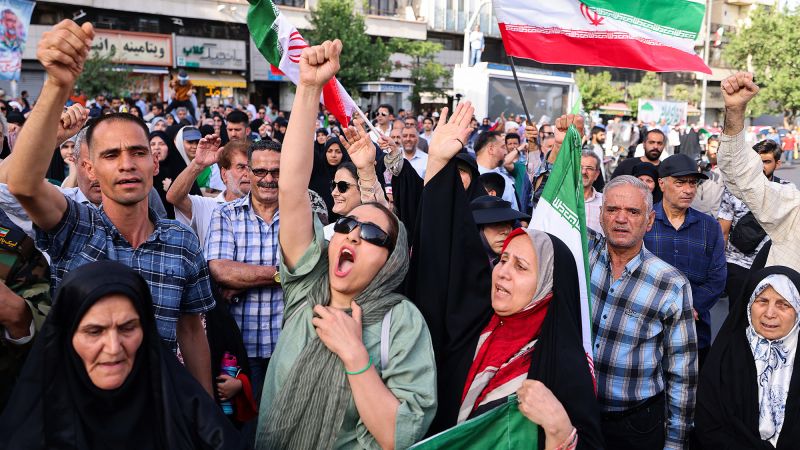What Happened
On June 23, 2025, a significant escalation occurred in the ongoing conflict between the United States, Israel, and Iran, following a series of military strikes. The U.S. launched airstrikes targeting three Iranian nuclear facilities, which President Donald Trump described as a “spectacular military success.” This operation, referred to as “Operation Midnight Hammer,” involved over 125 aircraft and included the use of advanced bunker-busting bombs aimed at Iran’s heavily fortified nuclear sites. The strikes were characterized by U.S. officials as a decisive blow to Iran’s nuclear capabilities, although the exact extent of the damage remains unclear.
In response, Iranian military officials and members of parliament vowed retaliation, asserting that the U.S. would face consequences for its actions. Iran’s Supreme Leader Ayatollah Khamenei has not publicly commented on the strikes, but military leaders have issued strong warnings, indicating that Iran would not back down and would respond with “powerful and targeted operations.” The conflict has intensified, with both Iran and Israel exchanging missile strikes, marking the 11th day of hostilities between the two nations.
Key Details
- U.S. Strikes: The U.S. airstrikes targeted three nuclear sites in Iran, including the Fordo facility, which is buried deep underground. The operation involved B-2 stealth bombers and Tomahawk missiles launched from submarines.
- Iranian Response: Iranian officials have promised a strong retaliation against U.S. interests in the region. Military leaders have warned that the U.S. has opened the door to retaliation.
- Casualties and Damage: As of now, the extent of casualties and damage from the strikes is still being assessed. Iranian state media has minimized the reported impact of the attacks.
- International Reaction: The strikes have drawn international attention, with calls for de-escalation from countries like China, which emphasized the need to maintain stability in the Strait of Hormuz, a critical shipping lane for global oil trade.
Multiple Perspectives
The U.S. government, particularly President Trump and his administration, has framed the strikes as a necessary measure to prevent Iran from developing nuclear weapons. Trump’s supporters argue that this decisive action demonstrates a strong stance against perceived threats from Iran and aligns with a broader strategy of U.S. military engagement in the Middle East.
Conversely, critics, including several Democratic lawmakers, have condemned the strikes as an unconstitutional act of war, arguing that there was no imminent threat justifying such military action. They have called for Congress to assert its authority under the War Powers Act to prevent unauthorized military engagements. Some analysts express concern that the strikes could lead to a broader conflict in the region, potentially drawing the U.S. into a prolonged military engagement.
Iranian officials have characterized the U.S. strikes as an act of aggression and a violation of their sovereignty. They argue that the attacks will not deter Iran from pursuing its nuclear program and may instead galvanize national unity against foreign intervention.
Context & Background
The U.S.-Iran relationship has been fraught with tension for decades, particularly following the U.S. withdrawal from the Joint Comprehensive Plan of Action (JCPOA) in 2018. The re-imposition of sanctions on Iran has exacerbated hostilities, leading to a series of confrontations in the region. The recent escalation follows a pattern of military exchanges between Israel and Iran, with both sides targeting military assets and infrastructure.
The Strait of Hormuz, through which approximately 20% of the world’s oil supply passes, is a critical geopolitical chokepoint. Any disruption in this area could have significant implications for global energy markets, making the current conflict a matter of international concern.
What We Don’t Know Yet
Several uncertainties remain regarding the situation. The full extent of the damage inflicted on Iran’s nuclear facilities is still being evaluated, and independent verification of claims made by both the U.S. and Iranian governments is necessary. Additionally, the potential for Iranian retaliation remains a critical concern, with various military options being considered by Iranian leadership.
The international community’s response to the escalating conflict is also unclear, particularly how other nations will react to U.S. military actions and Iran’s subsequent responses. The implications for global oil prices and security in the region are yet to be fully realized, as are the long-term effects on U.S. foreign policy and military strategy in the Middle East.
As the situation develops, further information will be crucial in understanding the broader consequences of this military engagement and the potential for diplomatic resolutions.


